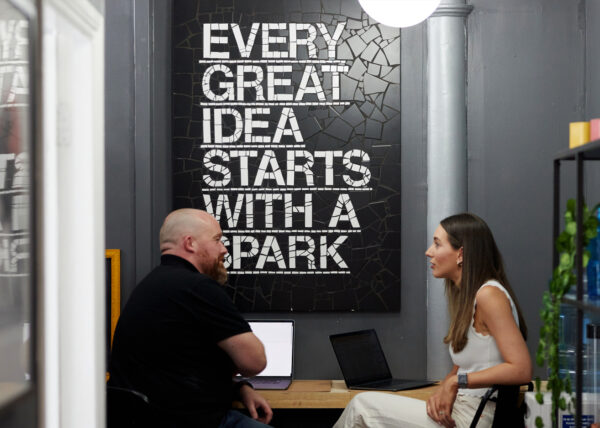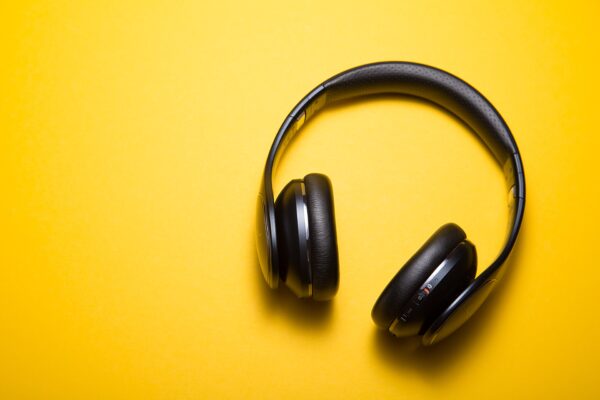
Hearing is feeling. Let’s get people to listen.

I have been lucky enough to just return from a trip to Sri Lanka. (#humblebrag)
At least twice a day, I went down to the beach, closed my eyes and listened to the waves.
I went to sleep soothed by the sound of crickets chirping.
I was stirred into consciousness again with the sound of the local birds singing.
I took a Spotify travel playlist of my favourite songs for different moods.
I listened to the tone of people’s voices to establish trust and try to communicate, when language was a barrier.
Life can be full of noise at times. But when you have time to hear, listen, appreciate and even enjoy sound, it becomes much more than just noise. It makes you really, really FEEL something.
At the moment in our industry and the world at large, images are king. Instagram pictures and stories; muted Facebook video; digital billboards. We MUSTN’T forget the importance of sound as an extremely powerful emotional trigger – evoking memories and feelings and associations. Images, without sound, can rarely have the same effect, unless the silence is poignant.
Some of our industry’s best and brightest realised this power – a conversation with our Creative Director Adam on this subject made him summon his inner advertising history geek :), saying that the late, great Paul Arden said that music is 50% of any great film or piece of advertising content; and Tony & Kim (Creative Directors at Wieden and Kennedy) put double the amount of time on music and voice artists than any other agency. We blimmin’ well agree, and here’s why.
Reaction to sound is one of our most basic instincts, and begins in the womb. Embryos react to sounds outside their mother’s body – changing their movements and emotions when different music is played. They are always able to detect mum’s voice, and are soothed by it. Once outside the womb, white noise can be played to calm them as the sound is similar to that of their mum’s blood pumping around her body.
I went to a talk on ‘The psychology of raving’, and dancing to music was described again as a basic human instinct, or ‘a primal sharing of muscle movement set to a rhythmic beat’. People in all cultures have been doing this for centuries in different forms in order to bond with each other.
When you walk into a house for the first time when viewing it, you probably don’t realise how much the way it sounds affects the overall feel; making it feel more or less comfortable and solid, plus you don’t really want to hear the toilet flushing upstairs! (We are working on a campaign for Isover acoustic solutions where we champion this concept – the ‘sound good factor’.)
An old housemate of mine was completely deaf…however she would listen to music and feel the vibrations and rhythm and I would hear her footsteps through the floorboards.
So what’s the role of sound for helping brands to communicate? How can we even get people to hear, and really listen to us, so that they can start to feel something?
We have to start thinking about this much earlier in our processes when we are planning all branding and brand communication, as all too often, on a film for example, music / SFX / VO is addressed at the end. Maybe we could think even more about how to achieve emotional reactions, and even action, through wonderful sound.
Grabbing attention
Before anyone really listens, you need to grab their attention. We need to think of the context they will be in in order to find the right sound to stand out. Sometimes, silence might grab attention more than the constant back-to-back noise. I will go on to mention Honda again later, however their ‘Cogs’ ad (with the sound of rolling cogs and windscreen wipers) in between an ad with music or a shouty salesman, undoubtedly grabs attention amid the sea of noise, even if you’re just listening to the TV (you would be sure to watch).
Creating a powerful, immersive experience
A challenge for you, try it! Next time you go on your daily commute, listen to Clair de Lune by Debussy. Have it on loud and really listen. It changes the hustle and bustle into something beautiful.
When you change the soundtrack, the more powerful and immersive an experience can be, and completely different.
Watch a video on Facebook with subtitles and then with sound on headphones, and notice the difference in how it makes you feel. John Lewis ads just aren’t the same without the soundtrack. You have to really listen and immerse yourself in it.
Brand recognition and association
Ever sat on a Jet2 plane? With their ownable piece of music you know exactly where you are. You know exactly which ad is on TV without even looking at it. And, as I’ve had a good experience with that airline, it doesn’t even irritate me that much…
Wieden and Kennedy spent 2-3 weeks finding the Honda voiceover guy, and it paid off – we all know when we’re listening to one of those brilliant ads (my personal favourite ad of all time is ‘Hate Something, Change Something, gives me goosebumps).
Digital UX
Operating systems, digital companies/websites and Apps use sound and vibration as part of user experience – often to to signify completion of a task or confirmation that you actually pressed that button. I have to say, the happiness I feel when I get the confirmation ‘beep/buzz’ that I’ve actually remembered my iTunes password cannot be underestimated!
Call to action / finding out information
Brands of course now use music as a call to action using Shazam in TV and radio advertising to detect the song and provide a webpage, a little more novel and easy than clicking on a link or typing in a URL. Now also with the rise and rise of Amazon Echo and Google Assistant etc, using sound and voice to find out more information is becoming more and more interesting.
Entertainment
We love a jingle at Spark when we have the radio on – it makes us all sing along, and we laugh. (#Look for 100 calorie snacks, 2 a day max!#)
And our ears may prick up when we hear “Wasssssuuuuupppp!” or ‘Dan! Dan! Dan!’ (sorry, I am a huge Partridge geek). What’s your favourite sketch or impression? Chances are, unless you’re into Charlie Chaplin or Harpo Marx, the ‘funny bit’ or at least the trigger for recognition, is aural.
There are so many opportunities to use sound to a brand’s advantage, I’ve only scratched the surface.
With the right consideration at the right stage, we can start to engage on a much deeper level.
Now doesn’t that sound amazing?
#punintended
REFERENCES (headphones required):
Clair De Lune by DeBussy (go on, please listen) – https://www.youtube.com/watch?v=CvFH_6DNRCY
Hate Something Change Something by Honda (Wieden and Kennedy) – https://www.youtube.com/watch?v=FHFkEm1NZfg
Dan! Alan Partridge – https://www.youtube.com/watch?v=fOad90BvvjM
Honda – The Cog – https://www.youtube.com/watch?v=_ve4M4UsJQo
Sound in UX, great article – https://uxplanet.org/the-role-of-sounds-in-ux-47adb8f82b38